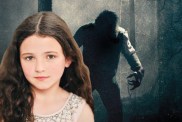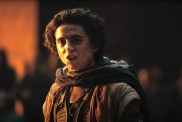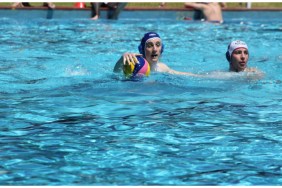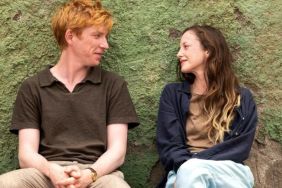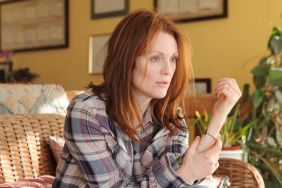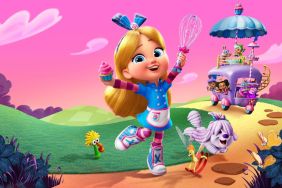Cast:
Johnny Depp as Mad Hatter
Mia Wasikowska as Alice
Helena Bonham Carter as Red Queen
Anne Hathaway as White Queen
Crispin Glover as Stayne Knave of Hearts
Matt Lucas as Tweedledee / Tweedledum
Stephen Fry as Cheshire Cat
Michael Sheen as White Rabbit
Alan Rickman as Blue Caterpillar
Barbara Windsor as Dormouse
Paul Whitehouse as March Hare
Timothy Spall as Bayard
Marton Csokas as Charles Kingsleigh
Tim Pigott-Smith as Lord Ascot
Lindsay Duncan as Helen Kingsleigh
Geraldine James as Lady Ascot
Leo Bill as Hamish
Frances de la Tour as Aunt Imogene
Jemma Powell as Margaret Kingsleigh
John Hopkins as Lowell
Eleanor Gecks as Faith Chattaway
Eleanor Tomlinson as Fiona Chattaway
Michael Gough as Dodo Bird
Imelda Staunton as Tall Flower Faces
Christopher Lee as Jabberwocky
Directed by Tim Burton
Story:
When teenager Alice Kingsleigh (Mia Wasikowska) falls down a rabbit hole, she discovers a magical world of talking animals and crazy inhabitants who all seem to know her… or someone very much like her.
Analysis:
The idea of Tim Burton taking on Lewis Carroll can be imagined on paper as a collaboration that promises to be as magical and inventive as each part of the equation, so it’s more than a little surprising when Burton’s take on Carroll’s “Alice in Wonderland” just doesn’t work as well on-screen. To Burton’s credit, he remains as faithful to Carroll’s text as he was to Roald Dahl for “Charlie and the Chocolate Factory,” but in this case, that might be a bad thing, because it probably needed to be updated to work for modern audiences.
This isn’t exactly the same story millions have read and loved told absolutely verbatim, but rather, it’s almost a sequel to Carroll’s work, opening with a prologue of Alice Kingsleigh as a young girl with a pallid complexion and circles around her eyes from nightmares she’s been having. 13 years later, she’s a lovely woman, played by Mia Wasikowska, with a vivid imagination trying to keep her wild ideas to herself in order to fit into proper upper-class British society where she’s about to be married off to a wealthy but awkward lord.
Once Alice falls down the rabbit hole and arrives in Underland–seriously, what is the point of making a pointless change like the name of the place?–she finds herself chatting with talking animals, wacky characters and some of the familiar elements from Carroll’s story like the shrinking potion and growth cake, but all of it is changed very slightly for the sake of Burton wanting to bring some originality to the mix. Burton’s dark gothic proclivities are often on display but it’s scaled back, while he’s clearly in “Beetlejuice” mode when developing the characterizations and the tone of the movie, but in this case, EVERY character acts like Keaton in that Burton classic.
Where that mindset goes wrong is in letting Johnny Depp go completely off the reservation with his take on the Mad Hatter, creating a character so insane on every level it’s almost impossible to endure for more than few seconds at a time. Of course, the Hatter’s role has been expanded to allow Depp more screen time to chew scenery as a character who ranges from moody sulking to crazy ranting Scottish brogue. What worked so well to make Willy Wonka a character one could empathize with fails miserably here, punctuated by a single moment late in the movie that’s so appalling it’s likely to kill any good will anyone has towards the character. In fact, the movie had already gone well off the rails long before that. By comparison, Helena Bonham Carter’s big-headed Red Queen is far more entertaining in her eccentricities, except for the moments where she resorts to shouting every line, which also get tiring.
The voices of the animated creatures range from the emotional Bayard the Bloodhound, voiced by Tim Spall, to the absolutely insane Paul Whitehouse as March Hare, who when paired with Depp’s Mad Hatter is almost unbearable. Others like Matt “Little Britain” Lucas as the Tweedles and Alan Rickman as the caterpillar seem to be delivering their lines so deadpan one wonders if the recording studio ran out of coffee that day.
Wasikowska is perfectly fine as Alice, but she lacks the energy and personality necessary to create a sense of wonder and excitement in the viewer. Unless this is your very first experience with “Alice in Wonderland” in any format, it’s difficult watching this movie with the sense of awe one has when first hearing the story. This is the main reason why Burton’s movie falters, because when it’s not throwing full-on insanity at the viewer, it’s actually quite dull; the characters aren’t necessarily better than any previous version but in many cases, they’re worse. Even with the few fun moments, it’s just not as entertaining an experience was Burton probably meant it to be. It’s almost as if he is trying to outdo his “visionary rival” Terry Gilliam in terms of what he can throw at his audience before they can’t endure anymore.
As creative as Burton is with the visuals, something just seems off with the mix of live action and CG animation. The creature designs are inventive and the animation is solid, but the way the live actors are transformed using CG, particularly Crispin Glover, makes one spend too much time focusing their gaze on the seams. This is made more apparent with the arrival of the Jabberwocky, who looks absolutely fearsome at first, but then starts to look like one of those rubber-suited Japanese monsters the longer it remains on screen. Part of the problem might be traced back to the decision to convert to 3D rather than filming using 3D cameras, and there just isn’t the depth of 3D one would expect from a movie that takes place in a fantasy world. By comparison, movies like “Coraline” and “Journey to the Center of the Earth” used the technology far more effectively, while “Alice” is one of the first 3D movies since “The Adventures of Shark Boy and Lava Girl” that not only hurt my eyes, but even made me feel somewhat nauseous while watching.
The final battle between the White and Red Queen is clearly the film’s high point, and it’s Burton at his most impressive as he delivers one of those massive grand-scale battles we’ve seen in so many other movies but with an inventive Carrollian twist. The real world bookend of the framing sequence also works to tie things together, but it’s somewhat disappointing that the moments outside of “Underland” tend to be more enjoyable than those in it.
The Bottom Line:
Like with Spike Jonze’s “Where the Wild Things Are” and Wes Anderson’s “Fantastic Mr. Fox,” Burton is a filmmaker whose inventive ideas on how to modify (rather than update) a classic tale allows for a lot of inventive visual ideas, but whose disconnect from normal mainstream thinking requires far more patience to put up with ideas that don’t work as well.
As far as Disney adaptations go, “Alice in Wonderland” pales in comparison to something like the “Narnia” movies, which always kept at least one foot in reality and remained aware that people who enjoy high fantasy like Carroll’s classic work are more than happy to experience the insanity, but don’t necessarily want to be driven insane themselves.


